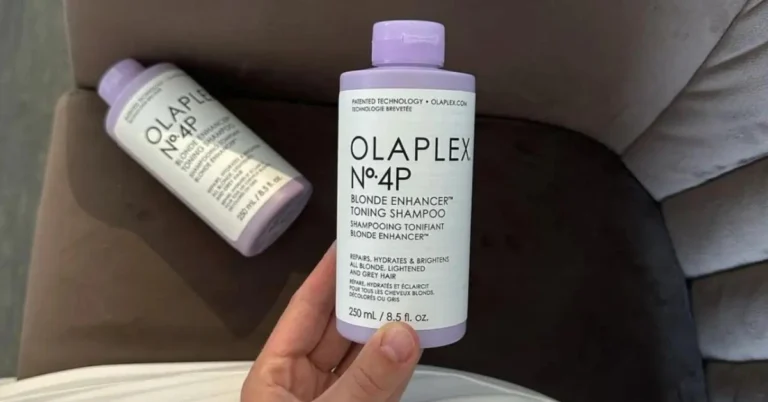When it comes to maintaining healthy skin, you might be familiar with the ongoing debate between lactic acid and salicylic acid. These ingredients are celebrated for their ability to exfoliate and rejuvenate the skin. However, choosing the right one for your specific skin type and issues can be a tough decision.
We’re here to help you navigate this world of chemical exfoliants and find the perfect match for your skincare routine.
Table of Contents
Lactic Acid Vs Salicylic Acid
Lactic acid, the dazzling water-soluble alpha-hydroxy acid, dances away dead skin cells, leaving behind a radiant and youthful complexion. Meanwhile, salicylic acid, the fearless oil-soluble beta-hydroxy acid, plunges deep into your pores, obliterating acne-causing bacteria and banishing debris.
Imagine having the perfect skincare tag team, working harmoniously to address all your skin woes. By combining the forces of lactic acid and salicylic acid, you unlock a potent solution that can tackle textured skin, fine lines, dark spots, clogged pores, stubborn acne, and those pesky enlarged pores. It’s time to take charge of your skin destiny and bask in the glory of a flawless complexion.
One exfoliant mask I use in the treatment room is 7% glycolic acid, 7% lactic acid, and 7% salicylic acid and I’m loving it
— Caroline Truban (@CarolineTruban) July 14, 2021
We’ll guide you through the strengths of lactic acid and salicylic acid, revealing the skin types they’re tailored for. Bid farewell to trial and error as we empower you with the knowledge to make an informed decision. Discover the ultimate skincare pairing that will revolutionize your routine and unveil the skin you’ve always dreamed of.
Overview of Lactic Acid

If you’ve been researching the best ingredients for your skincare routine, you’ve likely come across the lactic acid vs salicylic acid debate. But let’s focus on lactic acid, a game-changing ingredient that can transform your skin.
Properties of Lactic Acid
Lactic acid is an alpha hydroxy acid (AHA) commonly derived from milk. As a water-soluble exfoliator, lactic acid gently removes dead skin cells by dissolving the bonds that hold them together, revealing a brighter and smoother complexion. With its mild and soothing properties, lactic acid is suitable for all skin types, including sensitive skin.
Uses of Lactic Acid
Lactic acid is a versatile skincare ingredient with several benefits:
- Skin texture: Regular use of lactic acid can improve your skin’s texture, giving you a smoother and more radiant appearance.
- Fine lines: By promoting cell turnover, lactic acid helps reduce the appearance of fine lines and wrinkles.
- Dark spots: Lactic acid has the ability to lighten dark spots and even out your skin tone.
- Acne: Lactic acid can help combat acne by exfoliating and unclogging pores.
In conclusion, incorporating lactic acid into your skincare routine can bring about significant improvements in your skin’s overall appearance and health. Just remember, as with any skincare product, it’s essential to patch test first and consult with a dermatologist if you have any concerns.
Overview of Salicylic Acid

As you dive into the world of skincare, the debate of lactic acid vs salicylic acid might leave you wondering which one is best for you. Well, allow us to introduce you to the fantastic powers of salicylic acid.
Properties of Salicylic Acid
Salicylic acid is an oil-soluble, beta-hydroxy acid (BHA) derived from the willow tree bark. Its oil-soluble nature sets it apart from water-soluble alpha-hydroxy acids like lactic acid, enabling it to penetrate deep into your pores.
This magic ingredient has mild skin-soothing properties, making it a fantastic option for smoothing, exfoliating, and visibly reducing the appearance of enlarged pores.
Uses of Salicylic Acid
The versatile properties of salicylic acid make it a popular choice for various skincare concerns. Let’s explore some of its primary uses:
- Acne Treatment: Because salicylic acid can break up bacteria and dead skin cells clogging your pores, it effectively fights acne and prevents future breakouts.
- Exfoliation: Its ability to dissolve dead skin cells on the surface results in a smoother, brighter complexion.
- Combating the signs of aging: By gently exfoliating your skin and unclogging pores, salicylic acid can reduce the appearance of fine lines, dark spots, and uneven skin texture.
So there you have it! While salicylic acid might not be suitable for every skin type, its unique properties make it an excellent option for many skincare concerns. As you assess your needs in the lactic acid vs salicylic acid debate, we hope this friendly overview helps you make an informed decision.
Similarities and Differences in Skincare

You’re probably here because you’ve heard the buzz around lactic acid and salicylic acid – the two superstars of the skincare world. But what’s the real deal with lactic acid vs salicylic acid, and how can they work their magic on your skin? We’re here to unravel the mystery with a friendly and concise rundown of their similarities and differences.
Both lactic acid and salicylic acid are widely used in skincare products for their excellent exfoliating properties. They work by gently dissolving dead skin cells, revealing a smoother and brighter complexion. However, that’s where their similarities end.
Lactic acid, an alpha-hydroxy acid (AHA), is water-soluble and primarily addresses concerns like skin texture, fine lines, dark spots, and clogged pores. Derived from milk and certain fruits, this acid is known for enhancing ceramide production, which helps lock in moisture and prevent skin dryness.
On the other hand, salicylic acid is a beta-hydroxy acid (BHA) and is oil-soluble, meaning it can penetrate deep into the pores and break up bacteria and dead skin cells within them. This ability makes it especially effective for those with oily or acne-prone skin.
Moreover, salicylic acid is known for its skin-soothing properties, making it ideal for smoothing and exfoliating the skin while visibly reducing enlarged pores.
So, when choosing between lactic acid and salicylic acid for your skincare routine, consider your skin type and specific concerns. If you’re dealing with dry, uneven skin or age-related issues, reach for lactic acid. Meanwhile, if you’re battling oily skin and acne, salicylic acid could be your skin savior.
Benefits and Side Effects

Are you wondering about the differences between lactic acid vs salicylic acid? You’re in luck! In this section, we’ll explore their benefits and side effects to help you make an informed decision about your skincare routine.
Lactic Acid Benefits and Side Effects
Lactic acid is an alpha hydroxy acid (AHA) that works wonders on your skin by removing dead skin cells, lightening dark spots, and improving the appearance of fine lines and wrinkles. It’s gentle enough for sensitive skin and also helps to enhance ceramide production, which prevents skin dryness and locks in moisture.
However, like any skincare ingredient, lactic acid may cause some side effects. Overuse can lead to skin irritation, redness, and peeling. To minimize these risks, start with a low concentration and gradually increase it as your skin becomes accustomed to the treatment.
Salicylic Acid Benefits and Side Effects
On the other hand, salicylic acid is a beta hydroxy acid (BHA) that is oil-soluble, allowing it to penetrate deep into your pores to break up bacteria and dead skin cells. This versatile acid can help unclog pores, decrease blackheads, regulate oil production, and shrink pores, making it especially effective in treating acne.
Salicylic acid is generally considered safe, though excessive amounts might cause some unwanted side effects like skin dryness and irritation. As with lactic acid, consider starting at a low concentration and slowly increasing it as your skin adjusts to the treatment.
So, now that you know the benefits and possible side effects of lactic acid and salicylic acid, you can make an informed decision and choose the best one for your unique skincare needs. Remember to be patient and give your skin time to adjust. Happy skincare!
Choosing the Right Acid for Your Skin

When it comes to lactic acid vs salicylic acid in skincare, you might be wondering which one is best for you. As you explore these popular options, understanding the key differences and benefits will help you make an informed decision. Let’s dive in and discover which acid suits your skin needs.
Lactic acid is an alpha hydroxy acid (AHA) that is usually derived from milk. It’s known for its gentle exfoliating properties, and works by dissolving the bonds that hold dead skin cells together. This exfoliation process reveals brighter, smoother skin underneath.
Moreover, lactic acid enhances ceramide production, which can prevent dryness and lock in moisture. It’s the perfect choice for those with sensitive or dry skin who want a gentle exfoliation.
On the other hand, salicylic acid belongs to the family of beta hydroxy acids (BHA) and is ideal for those dealing with oily skin and acne. Its oil-soluble properties allow it to penetrate into the pore lining, breaking up bacteria and dead skin cells that cause clogged pores.
Additionally, it can help reduce the appearance of enlarged pores and even has mild skin-soothing properties.
- Need gentle exfoliation or have sensitive skin? Choose lactic acid.
- Dealing with acne or oily skin? Opt for salicylic acid.
When introducing a new acid into your skincare routine, it is essential to start slow to avoid irritation. Always patch test first, and consider consulting a dermatologist to help tailor the best skincare regimen for your unique needs.
Combining Lactic Acid with Salicylic Acid

When it comes to the battle of lactic acid vs salicylic acid, you may think you need to choose one or the other for your skincare routine. However, combining these two powerful ingredients can provide you with amazing benefits, tackling skin concerns like acne, uneven texture, and dullness.
Lactic acid, an alpha hydroxy acid (AHA), gently exfoliates the skin, revealing a smoother and brighter complexion. It’s known for addressing issues like skin texture, fine lines, dark spots, acne, and clogged pores.
Meanwhile, salicylic acid, a beta hydroxy acid (BHA), penetrates deeper into pores, removing dead skin cells and reducing irritation. By combining these two, you get a multitasking duo that targets different layers of the skin, efficiently working together to address various concerns.
However, there are some potential downsides to combining lactic acid and salicylic acid. Some individuals may experience irritation or dryness due to the increased strength of the exfoliation process. Always listen to your skin and adjust the frequency or concentration of the acids accordingly.
To properly combine lactic and salicylic acid in your routine, it’s essential to start gradually. First, patch test both products to make sure your skin doesn’t have an adverse reaction. Begin by using mild concentrations of each product on alternate days.
Over time, you can increase the frequency and strength as your skin becomes more tolerant. A friendly reminder: always wear sunscreen during the day, as exfoliated skin becomes more sensitive to the sun’s harmful rays.
By carefully combining lactic acid and salicylic acid in your routine, you can harness their unique benefits and enhance your skincare game. Don’t be afraid to experiment and find the perfect balance for your skin.
Lactic Acid vs Salicylic Acid: My Advice

Have you ever found yourself wondering: “lactic acid vs salicylic acid, which one is better?” You’re not alone. In my personal experience, I’ve discovered that using both together can offer the best results for your skin.
Let me tell you why. Lactic acid is an alpha hydroxy acid (AHA) derived from milk. It does an excellent job of exfoliating the surface of your skin, sloughing away dead skin cells, and revealing a brighter, smoother complexion.
Lactic acid also helps to improve skin texture, and reduce fine lines, dark spots, and acne. On the other hand, salicylic acid is a beta hydroxy acid (BHA) that works as a deep exfoliator. It’s oil-soluble, so it can penetrate the pores and break up any buildup of bacteria, which helps to prevent new breakouts.
Now you may be wondering, “How can I use both lactic acid and salicylic acid in my skincare routine?” Well, here are a few simple tips:
- Start with lower concentrations: When introducing both acids to your skincare regimen, choose products with low concentrations to ensure your skin can tolerate them.
- Alternate use: You can alternate between using a lactic acid product one night and a salicylic acid product the next. This way, you’ll benefit from the unique properties of each acid without potentially over-exfoliating your skin.
- Follow the instructions: Application frequency and order of products in a routine can vary. Always follow the manufacturer’s recommendations to achieve optimal results.
FAQ
Does lactic acid work like salicylic acid?
No, lactic acid and salicylic acid work differently. Lactic acid is an alpha hydroxy acid that exfoliates the skin’s surface, while salicylic acid is a beta hydroxy acid that penetrates pores and helps treat acne.
What not to use with lactic acid?
Avoid using lactic acid with other exfoliating ingredients like benzoyl peroxide, as it may increase the risk of irritation or sensitivity. Additionally, it’s best to avoid combining it with abrasive scrubs or physical exfoliants to prevent over-exfoliation.
Do I need to moisturize after lactic acid?
Yes, it’s important to moisturize after using lactic acid to replenish hydration and maintain a healthy skin barrier. Applying a moisturizer helps to lock in moisture, soothe the skin, and prevent dryness or irritation that may occur from using exfoliating products.
What skin is lactic acid best for?
Lactic acid is generally suitable for most skin types. It is particularly beneficial for those with dry or dull skin, as it helps to exfoliate and hydrate, revealing a brighter and smoother complexion. However, individuals with sensitive skin should patch test before regular use.
Do you use lactic acid or salicylic acid first?
When using both lactic acid and salicylic acid in your skincare routine, apply salicylic acid first. Salicylic acid is a beta hydroxy acid that penetrates pores, while lactic acid is an alpha hydroxy acid that exfoliates the skin’s surface. Applying salicylic acid first allows it to work effectively in the pores.
If you liked this blog article about the question: “Lactic Acid Vs Salicylic Acid: Wich Is More Effective?”, don’t forget to leave us a comment down below to tell us about your experience.





